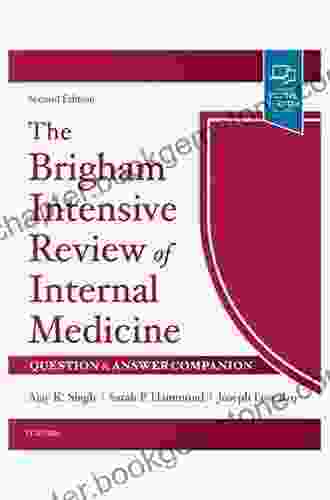Fostering Critical Thinking Through Collaborative Group Work

Critical thinking is a fundamental skill for students to develop in order to succeed in their academic and professional lives. Collaborative group work is an effective way to foster critical thinking skills in students, as it provides them with the opportunity to interact with their peers, share ideas, and learn from each other. In this article, we will provide educators with a comprehensive guide to implementing collaborative group work in their classrooms, including the benefits of collaborative group work, best practices for facilitating group discussions, and assessment strategies to measure student learning.
Benefits of Collaborative Group Work
There are many benefits to using collaborative group work to foster critical thinking skills in students. These benefits include:
4.3 out of 5
| Language | : | English |
| File size | : | 3298 KB |
| Text-to-Speech | : | Enabled |
| Enhanced typesetting | : | Enabled |
| Word Wise | : | Enabled |
| Screen Reader | : | Supported |
| Print length | : | 254 pages |
- Increased student engagement: When students are working together in groups, they are more likely to be actively engaged in the learning process. They are able to share their ideas with their peers, ask questions, and get feedback on their work.
- Improved communication skills: Collaborative group work helps students improve their communication skills. They learn how to listen to others, express their ideas clearly, and work together to solve problems.
- Greater understanding of content: When students work together in groups, they are able to share their different perspectives on the material. This helps them to develop a deeper understanding of the content.
- Development of critical thinking skills: Collaborative group work provides students with the opportunity to develop critical thinking skills. They learn how to analyze information, solve problems, and make informed decisions.
Best Practices for Facilitating Group Discussions
To get the most out of collaborative group work, it is important to facilitate group discussions effectively. Here are some best practices:
- Set clear goals and expectations: Before starting a group discussion, it is important to set clear goals and expectations for the group. This will help to ensure that the group stays on track and that all members are working towards the same goal.
- Create a positive and supportive environment: It is important to create a positive and supportive environment for group discussion. This means being respectful of all members of the group and encouraging them to share their ideas.
- Facilitate the discussion: The facilitator’s role is to guide the discussion and ensure that all members have an opportunity to participate. This may involve asking questions, clarifying points, and summarizing the main points of the discussion.
- Provide feedback: It is important to provide feedback to students on their performance in group discussions. This feedback can help students to improve their skills and learn from their experiences.
Assessment Strategies
It is important to assess student learning in order to determine the effectiveness of collaborative group work. There are a variety of assessment strategies that can be used to measure student learning, including:
- Individual assessments: Individual assessments can be used to measure student learning on their own. These assessments can include tests, quizzes, and assignments.
- Group assessments: Group assessments can be used to measure student learning in groups. These assessments can include group projects, presentations, and reports.
- Peer assessments: Peer assessments can be used to measure student learning by having students assess the work of their peers. This can help students to develop critical thinking skills and to learn from each other.
Collaborative group work is an effective way to foster critical thinking skills in students. When implemented effectively, collaborative group work can help students to develop their communication skills, increase their understanding of content, and develop their critical thinking skills. Educators should consider using collaborative group work in their classrooms to help students develop these important skills.
4.3 out of 5
| Language | : | English |
| File size | : | 3298 KB |
| Text-to-Speech | : | Enabled |
| Enhanced typesetting | : | Enabled |
| Word Wise | : | Enabled |
| Screen Reader | : | Supported |
| Print length | : | 254 pages |
Do you want to contribute by writing guest posts on this blog?
Please contact us and send us a resume of previous articles that you have written.
 Best Book
Best Book Page Flip
Page Flip Bookshelf
Bookshelf Literary loom
Literary loom Chapter
Chapter Bookish
Bookish PageTurner
PageTurner Bibliophile
Bibliophile Story
Story Inkwell
Inkwell Bookworm
Bookworm Labyrinth
Labyrinth Plot Twist
Plot Twist Prose
Prose Paperback
Paperback Storyteller
Storyteller Sanctuary
Sanctuary Fiction
Fiction Reading
Reading Chronicle
Chronicle Read
Read Vidya Subramanian
Vidya Subramanian Peter Mark Roget
Peter Mark Roget Eric D Miller
Eric D Miller Johnny Lung
Johnny Lung Conner Gorry
Conner Gorry Aaron Linsdau
Aaron Linsdau Soon Ho Jeon
Soon Ho Jeon Achim K Krull
Achim K Krull Katherine Routledge
Katherine Routledge Andre Moubarak
Andre Moubarak Lena Diaz
Lena Diaz Hank Wysocki
Hank Wysocki Leela Punyaratabandhu
Leela Punyaratabandhu Jon Sterngass
Jon Sterngass Aaron Chapman
Aaron Chapman Nate Turner
Nate Turner Arden Pala
Arden Pala Tim Burford
Tim Burford Daisy Taylor
Daisy Taylor David Chapin
David Chapin Murray Shukyn
Murray Shukyn Snap Summaries
Snap Summaries Wayne Stewart
Wayne Stewart Oscar Hijuelos
Oscar Hijuelos Shirley Soltesz Steiner
Shirley Soltesz Steiner Michael Mcinnis
Michael Mcinnis K Reynolds James
K Reynolds James Timothy Hallinan
Timothy Hallinan Eriko Sato
Eriko Sato Domingo Faustino Sarmiento
Domingo Faustino Sarmiento George Bernard Shaw
George Bernard Shaw Jim Ziolkowski
Jim Ziolkowski George Sandford
George Sandford Argo Brothers
Argo Brothers A R Vasishtha
A R Vasishtha Daniel Pautrat
Daniel Pautrat Lee Mylne
Lee Mylne Jonathan Gourlay
Jonathan Gourlay James Oseland
James Oseland Dan Davis
Dan Davis Cherise Sinclair
Cherise Sinclair Obongifreke Inyang
Obongifreke Inyang Abul K Abbas
Abul K Abbas W Scott Koenig
W Scott Koenig Rezaul Bahar
Rezaul Bahar Scott Dominic Carpenter
Scott Dominic Carpenter James A Cashin
James A Cashin Hollie Bell Schinzing
Hollie Bell Schinzing Christian Wolfe
Christian Wolfe L Blair
L Blair Ryan Dale
Ryan Dale Tim Rock
Tim Rock 5th Edition Kindle Edition
5th Edition Kindle Edition Aaron Robinet
Aaron Robinet Penny Hastings
Penny Hastings Boris Kachka
Boris Kachka Robert Jackson Bennett
Robert Jackson Bennett Lynn Austin
Lynn Austin P M Lane
P M Lane Liisa Vexler
Liisa Vexler Stuart Woods
Stuart Woods Tiziano Terzani
Tiziano Terzani Ali Khan
Ali Khan Joyce Carol Oates
Joyce Carol Oates Patrick Trese
Patrick Trese Frank Walters
Frank Walters Rae Ellen Lee
Rae Ellen Lee Eric Zweig
Eric Zweig Abi Elphinstone
Abi Elphinstone Grant Blackwood
Grant Blackwood Lan Sluder
Lan Sluder Samantha Allen
Samantha Allen Tina Tam
Tina Tam John Gookin
John Gookin John Carpenter
John Carpenter Jack L Roberts
Jack L Roberts Mary E Trimble
Mary E Trimble Todd Denault
Todd Denault Bruce Gernon
Bruce Gernon Rob Eastaway
Rob Eastaway Paul Heiney
Paul Heiney Andrew Graham Yooll
Andrew Graham Yooll Kenny Tan
Kenny Tan Stewart Giles
Stewart Giles John Muir
John Muir Springer Publishing Company
Springer Publishing Company Arthur Chichester
Arthur Chichester Richard Post
Richard Post Lori A Smolin
Lori A Smolin Kd Sofia Sigil
Kd Sofia Sigil Murray R Spiegel
Murray R Spiegel Claire Agutter
Claire Agutter Gregory Crouch
Gregory Crouch Blake Boles
Blake Boles Peter Heller
Peter Heller Melissa Abramovitz
Melissa Abramovitz Robert Vaughn
Robert Vaughn Larry Gonick
Larry Gonick Achusim Michael
Achusim Michael Insight Guides
Insight Guides Jane Yolen
Jane Yolen Kenneth Pickering
Kenneth Pickering Gretel Ehrlich
Gretel Ehrlich Ric Hajovsky
Ric Hajovsky Achref Hassini
Achref Hassini Not For Tourists
Not For Tourists Peter Levin
Peter Levin Todd Phillips
Todd Phillips Charlotte Dunford
Charlotte Dunford Ace Atkins
Ace Atkins John Mclachlan
John Mclachlan Jason Elliot
Jason Elliot Magic Guidebooks
Magic Guidebooks Dave Butler
Dave Butler Cynthia Snyder Dionisio
Cynthia Snyder Dionisio Marteeka Karland
Marteeka Karland Firefighter Now
Firefighter Now David Archer
David Archer Sian O Gorman
Sian O Gorman Sarah Retter
Sarah Retter Steve Berry
Steve Berry Bookrags Com
Bookrags Com One Exam Prep
One Exam Prep Gary Westphalen
Gary Westphalen Robert Birkby
Robert Birkby Denise Hamilton
Denise Hamilton Paul Crask
Paul Crask Maria Golia
Maria Golia Cpt Exam Prep Team
Cpt Exam Prep Team Ray Krueger Koplin
Ray Krueger Koplin Alf Alderson
Alf Alderson Alan R Cole
Alan R Cole Sophy Hunte
Sophy Hunte Geoffrey Wolff
Geoffrey Wolff A M Shine
A M Shine Selin Kiazim
Selin Kiazim Pallas Snider
Pallas Snider April Stephens
April Stephens Mark Richardson
Mark Richardson Patrick Hill
Patrick Hill Bob Goddard
Bob Goddard Moh Kolli Carnet
Moh Kolli Carnet Asha Kaul
Asha Kaul Eleanor Hogan
Eleanor Hogan Brian Winter
Brian Winter Sylvia Day
Sylvia Day Paul Brummell
Paul Brummell Luis Angel Echeverria
Luis Angel Echeverria Dan O Neill
Dan O Neill James Barrington
James Barrington Philipp Winterberg
Philipp Winterberg Mark Walters
Mark Walters Jack Summers
Jack Summers Ryan Judkins
Ryan Judkins Howard Frank Mosher
Howard Frank Mosher Michael Palin
Michael Palin Ida Pfeiffer
Ida Pfeiffer Poetry Row
Poetry Row Todd Lammle
Todd Lammle Iain Campbell
Iain Campbell H M Conroy
H M Conroy John King
John King Steven Cowie
Steven Cowie Anthony Dalton
Anthony Dalton Ian Durston
Ian Durston Tom Mattson
Tom Mattson Jasmina Susak
Jasmina Susak Christian Heath
Christian Heath Lisa See
Lisa See Yatir Nitzany
Yatir Nitzany Diana Gabaldon
Diana Gabaldon Joel A Dombrowski
Joel A Dombrowski Carla Hayden
Carla Hayden Brian Smith
Brian Smith Abby Jimenez
Abby Jimenez Phil G Tang
Phil G Tang Ash Davidson
Ash Davidson John Lyons
John Lyons Elizabeth Bohorquez Rn
Elizabeth Bohorquez Rn Julia Alvarez
Julia Alvarez Katherine Nouri Hughes
Katherine Nouri Hughes Chaz Van Heyden
Chaz Van Heyden Stewart M Green
Stewart M Green Jake Maddox
Jake Maddox Tracy Brown Collins
Tracy Brown Collins Carla Mooney
Carla Mooney Ray Scapinello
Ray Scapinello Anna Greathead
Anna Greathead Steven Konkoly
Steven Konkoly Phil Martin
Phil Martin 7th Edition Kindle Edition
7th Edition Kindle Edition Rob Soria
Rob Soria Tayyip Oral
Tayyip Oral Knowledge Tree
Knowledge Tree Nathan Bair
Nathan Bair Sheila O Flanagan
Sheila O Flanagan Abdul Al Lily
Abdul Al Lily Nicholas Ruddick
Nicholas Ruddick Mark Ryan
Mark Ryan Sally Miller
Sally Miller Kyoan
Kyoan Robert Edison Fulton
Robert Edison Fulton R I Chalmers
R I Chalmers Antoinette May
Antoinette May Aftab Hamid
Aftab Hamid Tara L Kuther
Tara L Kuther Bruce Berglund
Bruce Berglund Hugh Monney
Hugh Monney Edwidge Danticat
Edwidge Danticat Felicity Pine
Felicity Pine David A Goldstein
David A Goldstein Norman Hall
Norman Hall Lee Gutteridge
Lee Gutteridge Peter Robb
Peter Robb Jane Clapp
Jane Clapp Benedict Allen
Benedict Allen Matt Doeden
Matt Doeden Magi Nams
Magi Nams Samuel Willard Crompton
Samuel Willard Crompton Benjamin Southerland
Benjamin Southerland Mat Gilfedder
Mat Gilfedder Book Note Gifts
Book Note Gifts 2 Edition Kindle Edition
2 Edition Kindle Edition Gerry Cheevers
Gerry Cheevers Greg Seymour
Greg Seymour Corinna Cooke
Corinna Cooke Frederick Forsyth
Frederick Forsyth Mithu Sengupta
Mithu Sengupta Robert Arellano
Robert Arellano Debbie J Jenkins
Debbie J Jenkins William S Crooker
William S Crooker Jeff Gill
Jeff Gill Michael J Totten
Michael J Totten Alfie Kohn
Alfie Kohn W H Hudson
W H Hudson Mina Lebitz
Mina Lebitz Tahir Shah
Tahir Shah Seymour Lipschutz
Seymour Lipschutz Jayme Adelson Goldstein
Jayme Adelson Goldstein Sjaak Laan
Sjaak Laan Sir John Franklin
Sir John Franklin Stephen Hui
Stephen Hui Ronie Kendig
Ronie Kendig William D Frank
William D Frank Shawna Richer
Shawna Richer Michael Reid
Michael Reid Saeid Atoofi
Saeid Atoofi 6th Edition Kindle Edition
6th Edition Kindle Edition Matthew Bowling
Matthew Bowling R A Dalkey
R A Dalkey Isla Gordon
Isla Gordon Aaron H Goldberg
Aaron H Goldberg Viktoriya Tutev
Viktoriya Tutev Karen Marie Moning
Karen Marie Moning Adam Kimelman
Adam Kimelman Brian Burke
Brian Burke Gary Wonning
Gary Wonning A J Mackinnon
A J Mackinnon Kristine Ellingson
Kristine Ellingson Bob Cary
Bob Cary M J Rose
M J Rose Julie Miller
Julie Miller Edward C Klatt
Edward C Klatt Joie Jager Hyman
Joie Jager Hyman Ray T Malbrough
Ray T Malbrough David Wilkinson
David Wilkinson Penelope Douglas
Penelope Douglas James Rushforth
James Rushforth Stephanie Rosenbloom
Stephanie Rosenbloom Lizzie Lane
Lizzie Lane David Aretha
David Aretha Kathryn Reed
Kathryn Reed Andrew Lees
Andrew Lees Anna Kaminski
Anna Kaminski Alan Pritchard
Alan Pritchard Bernard Cornwell
Bernard Cornwell Maha Alkurdi
Maha Alkurdi Rich Dossan
Rich Dossan Cynthia Swanson
Cynthia Swanson Allison Williams
Allison Williams Luca Brambilla
Luca Brambilla Deb Spera
Deb Spera Jennifer Bohnet
Jennifer Bohnet S Elia
S Elia M J Mcgrath
M J Mcgrath Brad Taylor
Brad Taylor Daniel Francis
Daniel Francis Julia A Simms
Julia A Simms Sean Go
Sean Go Doug Knutson
Doug Knutson Baby Professor
Baby Professor William E Hearn
William E Hearn Adam Mansbach
Adam Mansbach Heather Fawcett
Heather Fawcett Shrm Test Prep Team
Shrm Test Prep Team Bryan Gillis
Bryan Gillis Philip Donlay
Philip Donlay F R Lifestyle
F R Lifestyle Mary Jane Walker
Mary Jane Walker Becki Willis
Becki Willis Said Hasyim
Said Hasyim Ascencia
Ascencia Iman Hami
Iman Hami Anne K Brown
Anne K Brown Gord Stellick
Gord Stellick Achille Rubini
Achille Rubini Christopher Black
Christopher Black Greg Jacobs
Greg Jacobs Richard P Clem
Richard P Clem Gavin Francis
Gavin Francis Steven L Emanuel
Steven L Emanuel Allyson Ambrose
Allyson Ambrose John Pitt
John Pitt Steve Schwartz
Steve SchwartzK D
 Angie Papple Johnston
Angie Papple Johnston Kate Hoskins
Kate Hoskins Joe Glickman
Joe Glickman Rob Vollman
Rob Vollman Marc Cameron
Marc Cameron Culture Smart
Culture Smart Brandon Stanton
Brandon Stanton Jitender Singh
Jitender Singh Shaan Patel
Shaan Patel Aayush Upadhyay
Aayush Upadhyay Mathivanan Palraj
Mathivanan Palraj Steven C Dinero
Steven C Dinero Sophie Claire
Sophie Claire Gen Tanabe
Gen Tanabe John Harrison
John Harrison Simone Braverman
Simone Braverman Jeevan Vasagar
Jeevan Vasagar Aldo Leopold
Aldo Leopold Franklin Horton
Franklin Horton Nick Popaditch
Nick Popaditch R G Richardson
R G Richardson Patrick Leigh Fermor
Patrick Leigh Fermor Morten Lund
Morten Lund Perce Harpham
Perce Harpham Jacqueline Langwith
Jacqueline Langwith Allan Sefton
Allan Sefton Jules Hayes
Jules Hayes Ariel Dorfman
Ariel Dorfman Timothy Egan
Timothy Egan Dave Hadfield
Dave Hadfield Omari Bouknight
Omari Bouknight Judy Lipson
Judy Lipson Tim Macgabhann
Tim Macgabhann Rough Guides
Rough Guides Marianne Hering
Marianne Hering Belinda Jones
Belinda Jones Scott Pratt
Scott Pratt Catherine Carrigan
Catherine Carrigan Kathy Campitelli
Kathy Campitelli Wolfgang Daunicht
Wolfgang Daunicht Aiva Books
Aiva Books Theodora Papatheodorou
Theodora Papatheodorou Mauricio Fau
Mauricio Fau Kanchan Suyash
Kanchan Suyash Eileen Tracy
Eileen Tracy George Cantor
George Cantor 1st Edition Kindle Edition
1st Edition Kindle Edition Ashley Oliphant
Ashley Oliphant Kaplan Test Prep
Kaplan Test Prep Second Edition New Edition Updated Revised...
Second Edition New Edition Updated Revised... Adam Woog
Adam Woog Clive Cussler
Clive Cussler Orji Onyebuchi
Orji Onyebuchi John T Moore
John T Moore Jeffrey L Buller
Jeffrey L Buller Stanley Cohen
Stanley Cohen Jamie Watts
Jamie Watts David Quammen
David Quammen Kenny Dill
Kenny Dill John Steinbeck
John Steinbeck Triumphant Test Prep
Triumphant Test Prep Dean Koontz
Dean Koontz Elin Hilderbrand
Elin Hilderbrand Rolls Canardly
Rolls Canardly Alberto Granado
Alberto Granado Vincent Ardizzone
Vincent Ardizzone Maryetta Ackenbom
Maryetta Ackenbom Ken Ilgunas
Ken Ilgunas Bhavesh Mamtani
Bhavesh Mamtani Jermaine Marshall
Jermaine Marshall 2nd Edition Kindle Edition
2nd Edition Kindle Edition Timothy Dickeson
Timothy Dickeson Risto Pakarinen
Risto Pakarinen Eliot Schrefer
Eliot Schrefer Andrew Grant Wood
Andrew Grant Wood Janet Engle
Janet Engle Sarah Spencer
Sarah Spencer Second Edition Kindle Edition
Second Edition Kindle Edition Dana Fredsti
Dana Fredsti Natalya Androsova
Natalya Androsova Sally Bendersky
Sally Bendersky Deborah Manley
Deborah Manley Mike Humfreville
Mike Humfreville Mike Gibson
Mike Gibson P T Shank
P T Shank Doug Feldmann
Doug Feldmann Alex Kerr
Alex Kerr Peter Grant
Peter Grant Jennifer Kingsley
Jennifer Kingsley Sharon Boyd
Sharon Boyd Peter Avery
Peter Avery Adam J Wright
Adam J Wright Josh Pahigian
Josh Pahigian Julian Mcdougall
Julian Mcdougall Sherryl Woods
Sherryl Woods Dk Eyewitness
Dk Eyewitness Achy Obejas
Achy Obejas Katie Mangelsdorf
Katie Mangelsdorf Steven Hawthorne
Steven Hawthorne Andrew Jalbert
Andrew Jalbert Stephen C Doyle
Stephen C Doyle Silke Noll
Silke Noll Guinevere Durham
Guinevere Durham Steve Hindman
Steve Hindman Henry Walter Bates
Henry Walter Bates Nina Belile
Nina Belile Laverne Mordella
Laverne Mordella Katie Peuvrelle Ma
Katie Peuvrelle Ma Glenda Durano
Glenda Durano William Gilbert
William Gilbert Jens Eriksen
Jens Eriksen 3rd Edition Kindle Edition
3rd Edition Kindle Edition Stuart James Amei
Stuart James Amei Rohan Agarwal
Rohan Agarwal Vibrant Publishers
Vibrant Publishers Pam Gaffin
Pam Gaffin V S Naipaul
V S Naipaul Zachary Willey
Zachary Willey Mark Kurlansky
Mark Kurlansky Tad Fitch
Tad Fitch Wizer
Wizer Eboo Patel
Eboo Patel Marjorie Agosin
Marjorie Agosin Peter Schinkai
Peter Schinkai Termite Terry Singleton
Termite Terry Singleton Mark Tredinnick
Mark Tredinnick Isobel Williams
Isobel Williams Eva Zonnios
Eva Zonnios Brian J Sommers
Brian J Sommers Kerry Colburn
Kerry Colburn Con Coughlin
Con Coughlin Greyson Ferguson
Greyson Ferguson Jonathan Raban
Jonathan Raban Goldmine Reads
Goldmine Reads Ian Ball
Ian Ball Samuel T Reddy
Samuel T Reddy Stacey Barrett
Stacey Barrett Dr Luz Claudio
Dr Luz Claudio Dave Hanson
Dave Hanson Lucy Postgate
Lucy Postgate R Wayne Stacy
R Wayne Stacy Blake Sebring
Blake Sebring Chris Losh
Chris Losh Ken Baird
Ken Baird Proper Education Group
Proper Education Group Tim Keesee
Tim Keesee Sparknotes
Sparknotes Ghassan Moussawi
Ghassan Moussawi Marshal Shlafer
Marshal Shlafer Vb Leghorn
Vb Leghorn Loris Chen
Loris Chen Edwin C Bearss
Edwin C Bearss Spire Study System
Spire Study System Ethelyn Geschwind
Ethelyn Geschwind Tony Barnhart
Tony Barnhart Krishna Swaroop Achanta
Krishna Swaroop Achanta Petru Popescu
Petru Popescu Sue Feldman
Sue Feldman Mieke Leenders
Mieke Leenders Charles Euchner
Charles Euchner Nick Hobgood
Nick Hobgood Pam Coburn
Pam Coburn Nathan Turner
Nathan Turner Lilia Moritz Schwarcz
Lilia Moritz Schwarcz Francis Parkman
Francis Parkman Borja Loma Barrie
Borja Loma Barrie Sport Hour
Sport Hour Ron Siliko
Ron Siliko
Light bulbAdvertise smarter! Our strategic ad space ensures maximum exposure. Reserve your spot today!
 Craig BlairFollow ·9.8k
Craig BlairFollow ·9.8k Gage HayesFollow ·5.1k
Gage HayesFollow ·5.1k Garrett PowellFollow ·5.6k
Garrett PowellFollow ·5.6k Jordan BlairFollow ·16k
Jordan BlairFollow ·16k Colton CarterFollow ·11.8k
Colton CarterFollow ·11.8k Marcus BellFollow ·16.5k
Marcus BellFollow ·16.5k Caleb LongFollow ·19.2k
Caleb LongFollow ·19.2k Clayton HayesFollow ·16.6k
Clayton HayesFollow ·16.6k

 Elias Mitchell
Elias MitchellTravels in False Binary: Exploring the Complexities of...
In a world rigidly...

 Ray Blair
Ray BlairTreason: An Electrifying Chapter in the Stone Barrington...
Prepare yourself for an adrenaline-fueled...

 Bryan Gray
Bryan GrayGo De Rass To Sleep Jamaican Translation: A Comprehensive...
The vibrant and...

 Victor Turner
Victor TurnerFearless: One Woman, One Kayak, One Continent
In 2018, Sarah...
4.3 out of 5
| Language | : | English |
| File size | : | 3298 KB |
| Text-to-Speech | : | Enabled |
| Enhanced typesetting | : | Enabled |
| Word Wise | : | Enabled |
| Screen Reader | : | Supported |
| Print length | : | 254 pages |















